Cleaning Fruits And Vegetables Of Pesticides
Have you ever had the impulse to pick a grape from the bunch without first washing it?
Unwashed fruits may appear innocuous, yet they may contain pollutants and dangerous pathogens. All fruits must be thoroughly cleaned before consumption in order to prevent foodborne illnesses for you and your family.
Whether you purchased your fruits and vegetables from your local farmers market, grocery shop, or garden, following these easy yet efficient washing instructions will guarantee that they are safe to consume.
Table of Contents
Why Fruit Washing Is Important
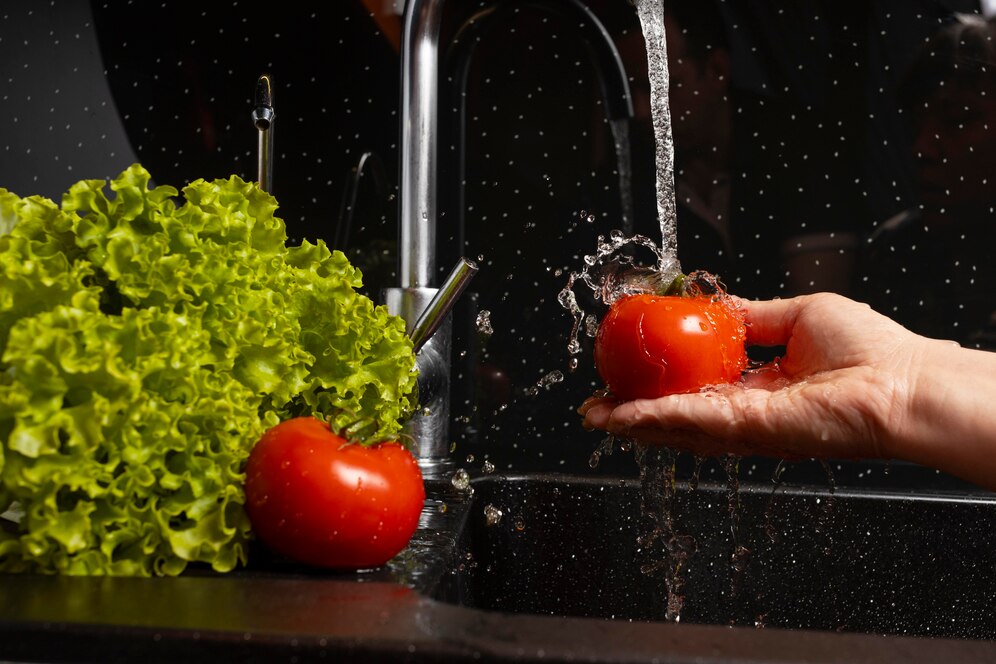
Washing peaches in the sink You may believe that fruits, particularly organic ones, are pure and ready to eat right out of the basket, but even the purest produce can contain bacteria, pesticides, and dirt that can contaminate fruits and vegetables and endanger your health.
Even while organic fruits don’t include artificial pesticides, they may still have dirt and other growth-related residue. Furthermore, a protective wax coating on some fruits may trap impurities.
You can safely enjoy your food by removing dangerous impurities by following the easy methods shown below.
Begin By Washing Your Hands
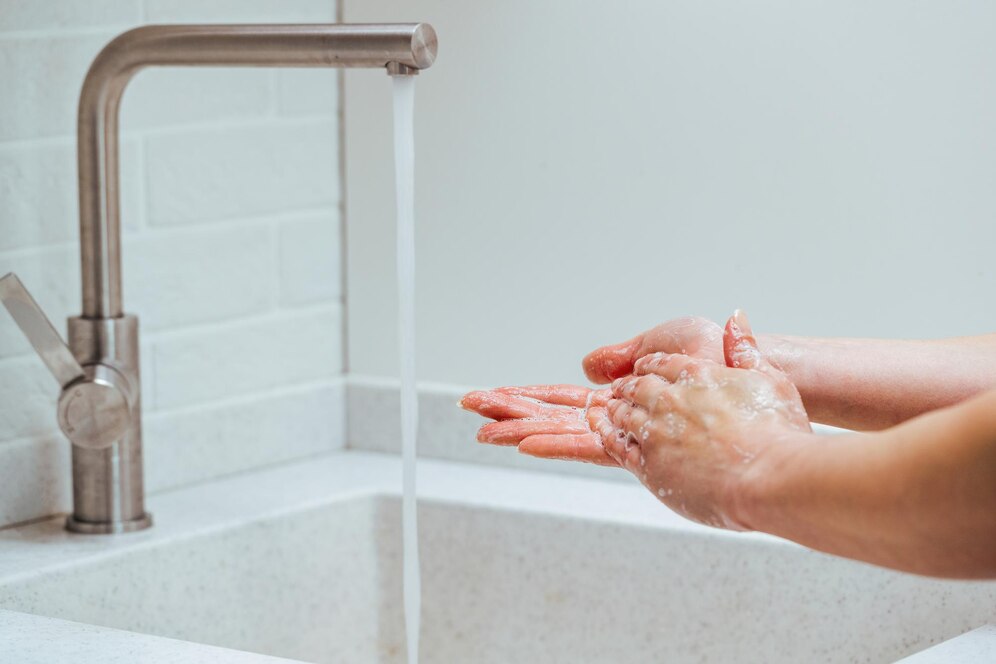
It’s crucial to wash your hands before beginning to wash your fruits and vegetables. To avoid transferring any dirt or bacteria to your produce, give them a thorough wash with soap and water.
Use an organic hand soap to go along with your healthy way of living. There are other reasonably priced and efficient organic alternatives, such Meyer’s Clean Day, which is renowned for its all-natural components and lovely aroma.
Use Cold Water To Rinse
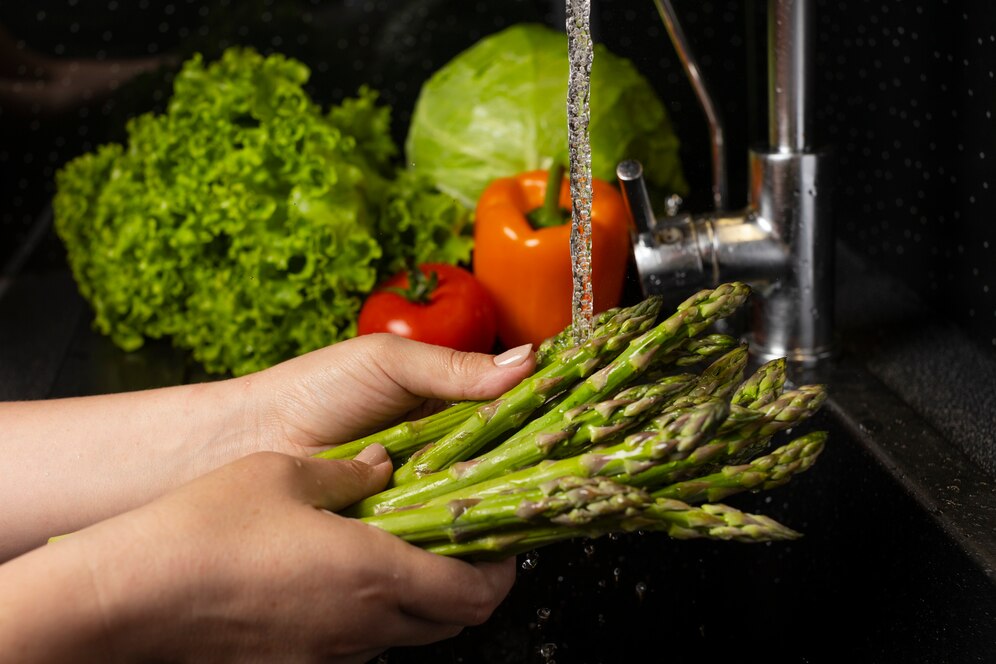
It is now time to begin cleaning your vegetables before cleaning your hands. In order to get rid of any remaining pesticide residue, dirt, and debris, start by washing your fruits and vegetables under warm water.
You can soak them in a dish of water for a few minutes or rinse each one separately while you get your other kitchen necessities ready.
Pay attention to local weather conditions to get the most out of your summer fruit. Knowing when to eat fruits and vegetables can help you maximize their freshness and quality.
Dust Off With A Produce Brush
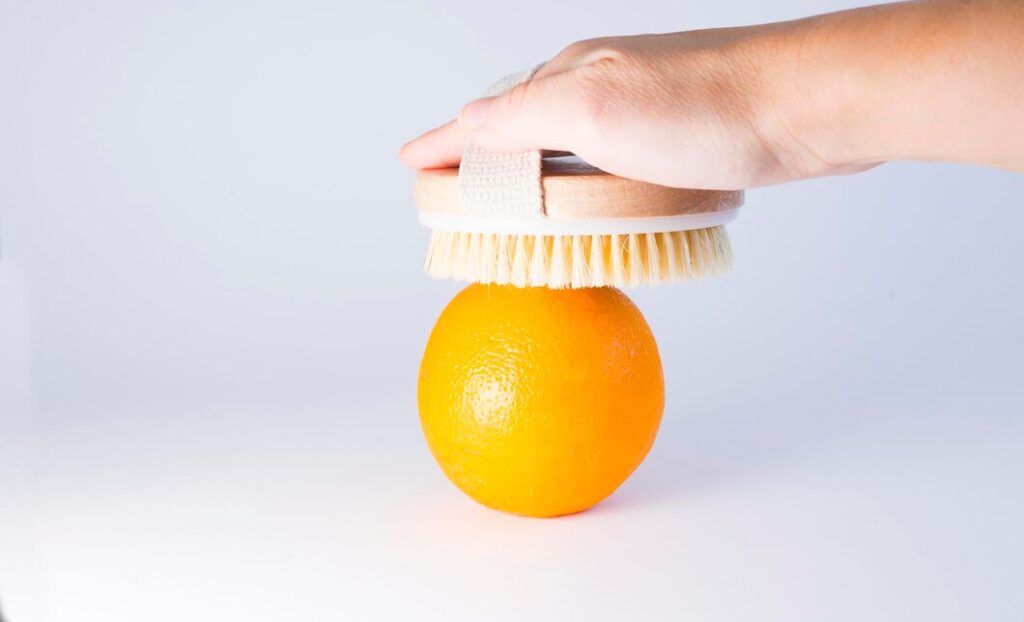
Apples, cucumbers, and Oranges are examples of fruits with rough or textured skins that can benefit from a produce brush.
Gently wash the fruit under running water to avoid harming its fragile skin.
Softer fruits, such as peaches and plums, might not need as much cleaning, but a brush can still assist get rid of any residue or debris that won’t go away.
Dissolve Your Fruit in Vinegar
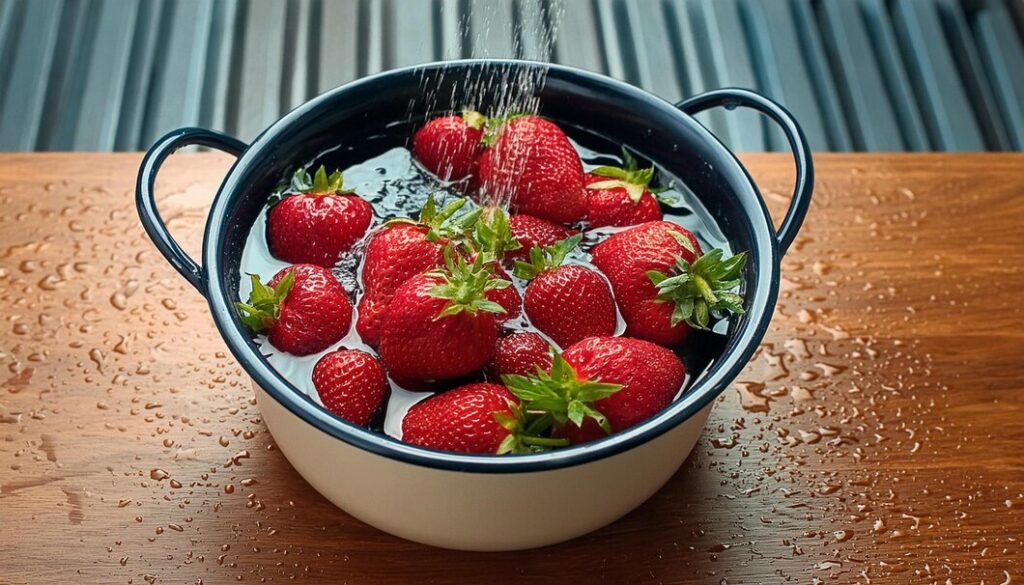
A strawberry adrift in water Clean your produce thoroughly with a vinegar solution after rinsing it. This all-natural disinfectant can aid in lowering pesticide residue and bacteria even more. In order to make the solution, combine one part vinegar with three parts water.
Soak your fruits and vegetables in the mixture for five to ten minutes, and then rinse them thoroughly with cold water.
Baking Soda: An All-Natural Cleaning Wonder
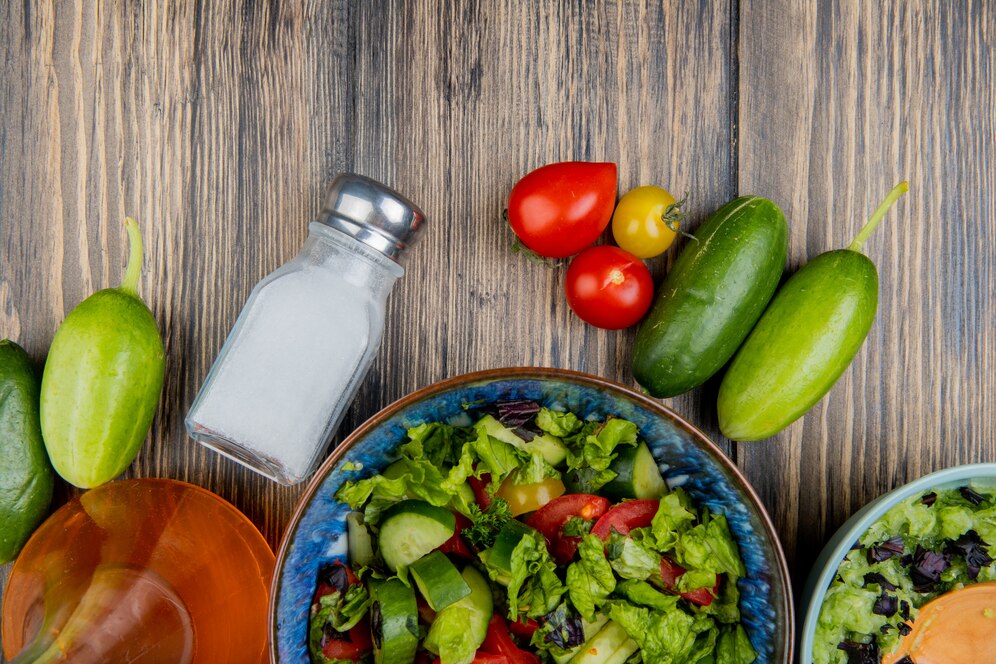
After rinsing your produce, give it a deep clean with a vinegar solution. This natural disinfectant can help further reduce bacteria and pesticide residue.
To make the solution, combine one part vinegar with three parts water. Soak your fruits and vegetables in this mixture for five to ten minutes, then rinse them thoroughly under cold water.
Dry Your Produce With A Pat
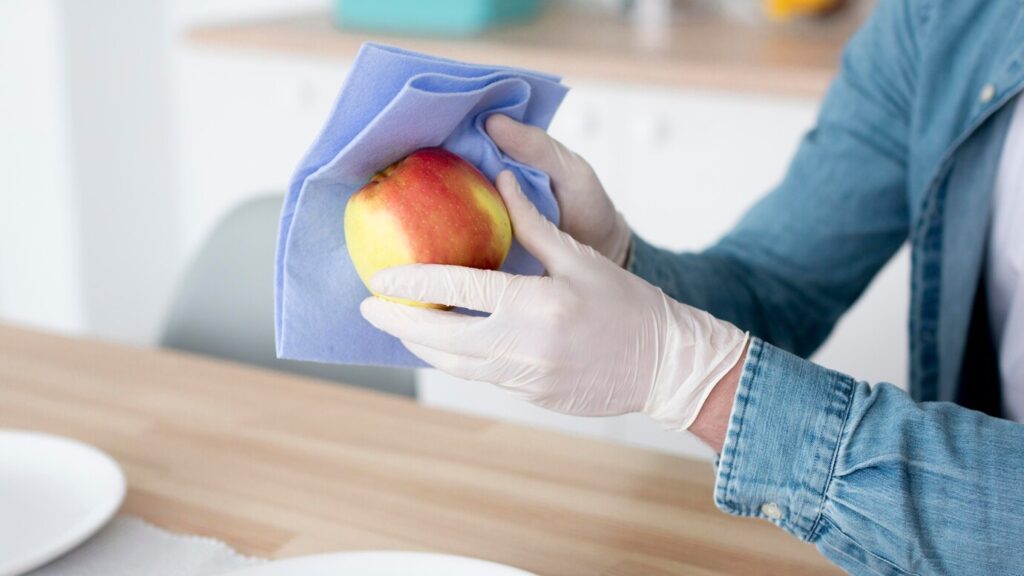
Use a fresh kitchen towel to gently pat dry your vegetables after washing and rinsing. By doing this, you can assist get rid of any extra moisture and stop bacteria from forming.
Produce can be allowed to air dry, but patting it dry guarantees that the whole surface is sanitized and free of impurities.
RELATED :
1- You Won’t Believe What Happens When You Try Green Tea For Weight Loss
2- Lizzo Weight Loss Journey: A Comprehensive Insight
Get Your Produce Ready For Easy Consumption
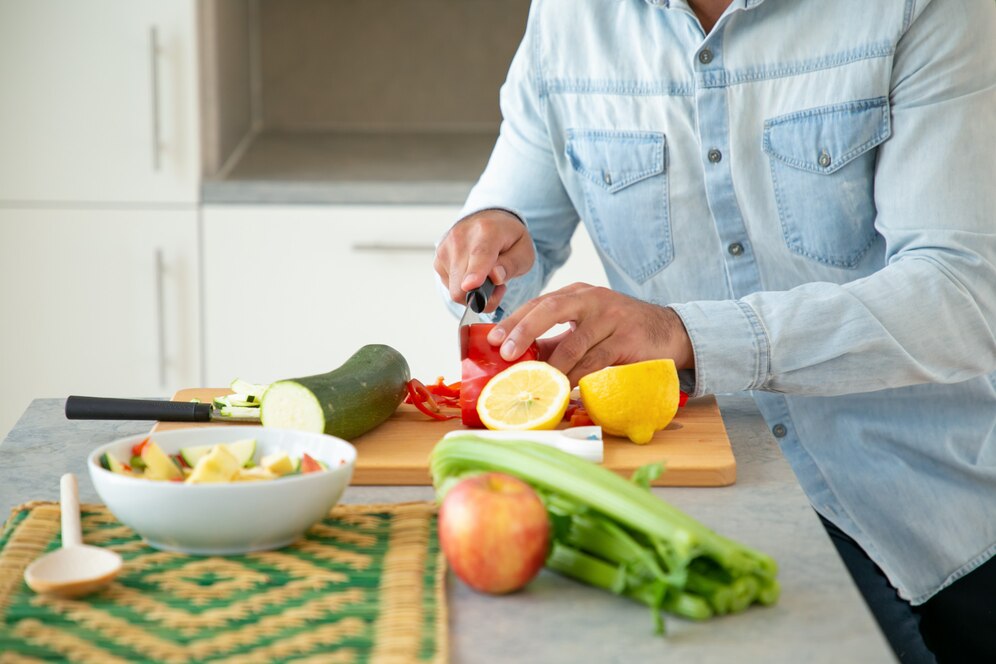
After washing and drying your produce, take a moment to get it ready for eating. When working with strawberries, for instance, cut them into bite-sized pieces after removing the stems.
If you prepare your vegetables ahead of time and keep them in the fridge, you’re more likely to eat them throughout the week. Fruits and vegetables that are easy to slice and store for easy snacking, like cucumbers, benefit greatly from this.
Additional Advice for Safe Fruit and Vegetable Use
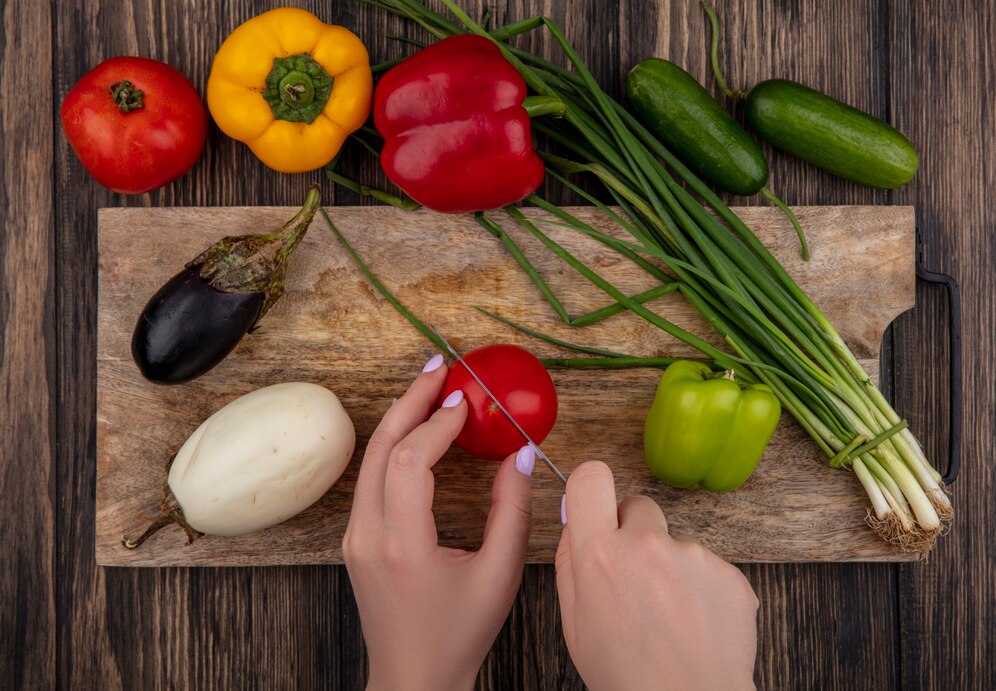
On their skin, even fruits with peels, such as bananas, may contain impurities. Before eating, always give them a good cleaning. Additionally, since stickers and labels may contain dangerous compounds, take them off. On their skin, even fruits with peels, such as bananas, may contain impurities. Before eating, always give them a good cleaning.
Additionally, since stickers and labels may contain dangerous compounds, take them off.
Keep fruits and vegetables on different cutting boards to avoid cross-contamination. Since hand soap and dish soap can be absorbed and may not be safe to eat, avoid using them to clean your fruit.
Cleaning Fruits And Vegetables Of Pesticides may seem like an extra step, but a tiny investment may make a big difference in your health.
Adhere to these easy rules to enjoy your produce with more peace of mind and provide your body with healthy, nourishing nutrients.
